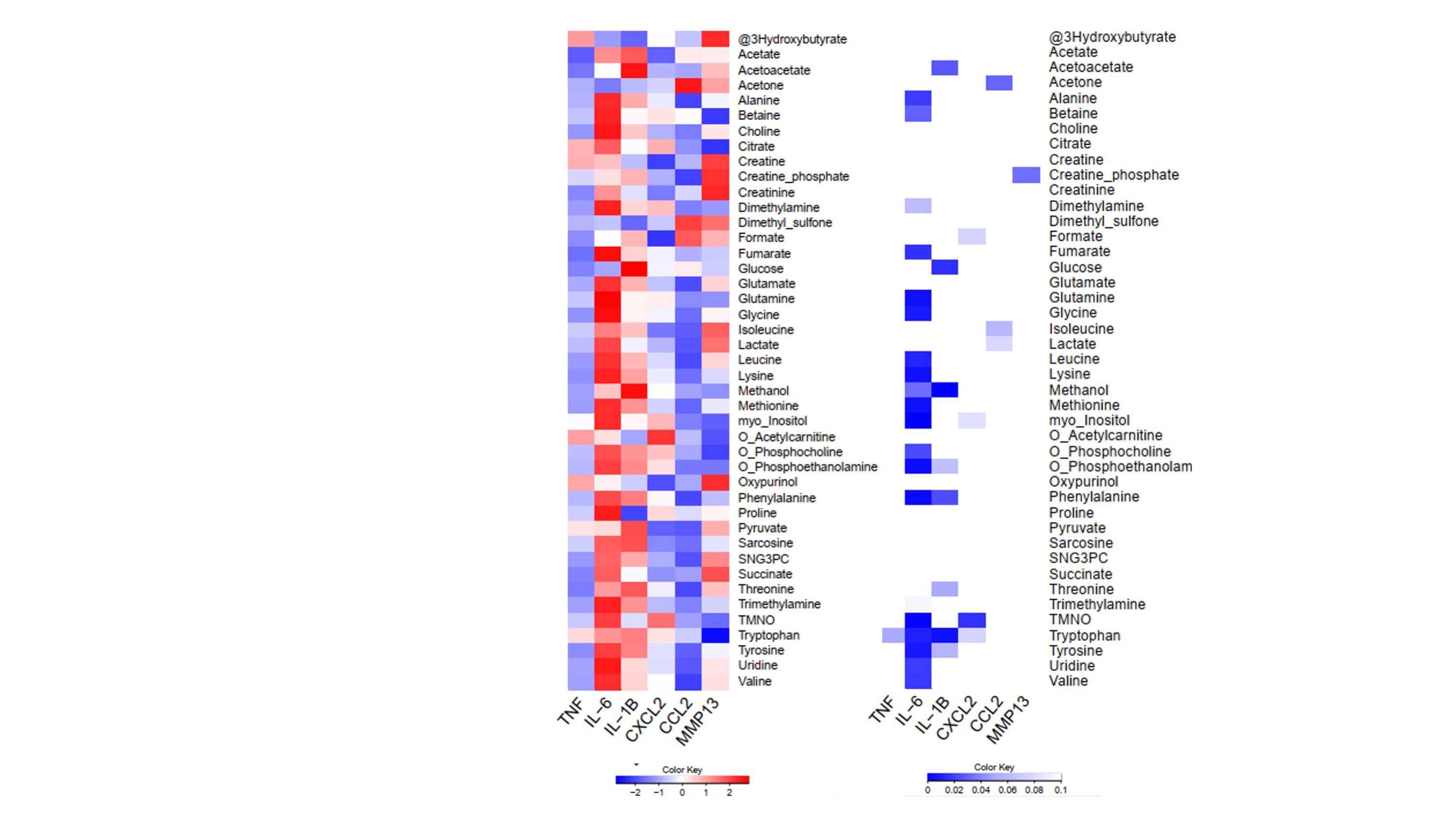Session Information
Date: Sunday, November 7, 2021
Title: Abstracts: Osteoarthritis & Joint Biology – Basic Science (0940–0943)
Session Type: Abstract Session
Session Time: 9:45AM-10:00AM
Background/Purpose: Increasing evidence indicates that osteoarthritis (OA) progression is mediated not simply by progressive degeneration of cartilage, but also by low-grade synovial inflammation (synovitis) that is associated with increased symptoms in knee OA (KOA). Ongoing inflammatory responses are associated with dramatic shifts in tissue metabolism. The objective of this work is to explore the metabolomic profiling in synovial tissue (ST) from OA patients and its association with synovial inflammation.
Methods: 37 ST samples (28 knees and 9 hips) were collected from patients with OA during hip or knee replacement. ST was either fixed in formalin for histology analysis, cultured (explants) for 24 hours to collect supernatant for cytokine analysis, or snap-frozen for metabolomic analysis. ST samples were categorized as inflammation 0-I vs II-III according to the Krenn histopathological synovitis score. We also categorized our samples in fibrosis 0-I vs fibrosis II-III with Masson’s trichrome staining. A 600 MHz Bruker Avance III spectrometer 1H-NMR was used to acquire NMR spectra of ST samples. Software Chenomx NMR suite 8.5 professional was used for metabolite identification and quantification. The samples were normalized by volume/weight and the concentrations are reported in μM. Proinflammatory mediators were measured by ELISA. Metaboanalyst 5.0, SPSS v26, and R studio were used for statistical analysis.
Results: 51 metabolites were detected in the ST by 1H-NMR. ST samples were divided in inflammation 0-I (n= 13) vs inflammation II-III (n=24), and fibrosis 0-I (n=18) vs fibrosis II-III (n=19). Only 4 metabolites were different between the 2 fibrosis categories (acetoacetate, creatine phosphate, tryptophan and proline). However, the levels of several metabolites (lactate alanine, fumarate, glutamine, glycine, leucine, lysine, methionine, trimethylamine N-oxide, tryptophan and valine) were elevated in ST with inflammation II-III compared to 0-I (Table 1). Proinflammatory mediators (TNF, IL-1b, IL6, CCL2, CXCL2 and MMP13) from ST explants (n-24, 9 with inflammation 0-I, and 15 with inflammation II-III) were measured in the supernatants. CXCL2 and IL-6 levels were higher in ST explants supernatants with inflammation II-III than with 0-I (Table 1). IL-6, but also IL-1β, correlated positively with several metabolites (Figure 1).
Conclusion: Metabolomic profiling of synovial tissue can identify metabolic changes associated with inflammation. Further studies are needed to determine whether metabolomic profiling of synovial tissue can identify new therapeutic targets in inflammatory osteoarthritis.
To cite this abstract in AMA style:
Murillo Saich J, Coras R, Meyer R, Guma M. Metabolomic Profiling of Synovial Tissue of Patients with Osteoarthritis [abstract]. Arthritis Rheumatol. 2021; 73 (suppl 9). https://acrabstracts.org/abstract/metabolomic-profiling-of-synovial-tissue-of-patients-with-osteoarthritis/. Accessed .« Back to ACR Convergence 2021
ACR Meeting Abstracts - https://acrabstracts.org/abstract/metabolomic-profiling-of-synovial-tissue-of-patients-with-osteoarthritis/


